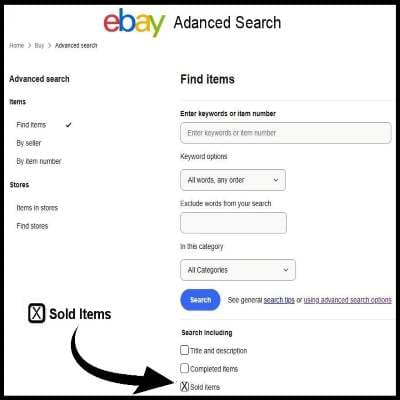The Real Value of Collectibles
Why Sold Listings Beat Price Guides Every Time
When it comes to determining the true value of collectibles, there's one fundamental truth that every collector, dealer, and enthusiast needs to understand: an item is only worth what someone is actually willing to pay for it. While this might seem obvious, countless people rely on outdated price guides and theoretical valuations that have little connection to real-world market conditions.
The most accurate way to determine current market values for collectibles is by examining recent sold listings from major auction houses like Barnebys and online marketplaces like eBay. These platforms provide real-time data on what collectors are actually paying, not what someone thinks an item should be worth.
The Collectibles Market: A World of Endless Possibilities
The collectibles market encompasses an incredibly diverse range of items, each with its own passionate community of collectors and unique market dynamics. From vintage coins that have circulated for decades to comic books that capture cultural moments, the variety is staggering.
Ancient to modern currency
Banknotes and currency
Postal history treasures
Sports memorabilia
Pop culture artifacts
Music history
Each of these categories has experienced significant fluctuations in value over the years, influenced by factors such as pop culture trends, generational interests, economic conditions, and the discovery of rare specimens. Traditional price guides simply cannot keep pace with these rapid changes.
The Power of Real Sales Data
Unlike static price guides that are updated annually or even less frequently, sold listings provide dynamic, real-time market data. When you examine what items have actually sold for in recent weeks or months, you're seeing the market's true valuation based on supply, demand, and current collector interest.
Remember: The market value of any collectible is determined by the intersection of what sellers are willing to accept and what buyers are willing to pay. No price guide can capture this dynamic relationship as accurately as actual sales data.
eBay: The World's Largest Collectibles Marketplace
eBay's collectibles categories represent one of the most comprehensive databases of collectibles sales in the world. With millions of transactions occurring daily, the platform provides an unparalleled view into current market conditions. The key to using eBay effectively for valuation is understanding how to access and interpret sold listings rather than just current auction prices.

eBay's advanced search feature allows you to filter by sold listings, providing crucial market data that most collectors overlook.
Most people browsing eBay only look at current listings and asking prices, which can be misleading. Sellers might list items at unrealistic prices, hoping for an uninformed buyer. The real insight comes from examining completed sales, which show what buyers actually paid. This data reveals market trends, seasonal fluctuations, and the impact of condition on value.
How to Use eBay's Sold Listings Effectively
To access sold listings on eBay, use the advanced search feature and check the "Sold listings" box. This reveals completed auctions and fixed-price sales from the past 90 days. When analyzing this data, consider factors such as item condition, seller reputation, auction timing, and whether the sale included original packaging or documentation.
Barnebys: Professional Auction Results
While eBay provides grassroots market data, Barnebys offers access to professional auction house results from around the world. This platform aggregates sales data from major auction houses, providing insight into the high-end collectibles market where rare and valuable items often find their true worth.

Barnebys provides access to professional auction house results, offering insight into high-value collectibles transactions.
Barnebys is particularly valuable for rare or high-value collectibles that might not frequently appear on eBay. The platform's database includes results from prestigious auction houses like Sotheby's, Christie's, and specialized collectibles auction houses. This data is crucial for understanding the upper echelons of the collectibles market.
The Limitations of Traditional Price Guides
Traditional price guides, whether in print or digital format, serve an important educational purpose by providing historical context and helping collectors understand rarity and grading standards. However, they have significant limitations when it comes to current market valuation.
Price Guide Advantages
• Provide historical perspective
• Help identify rare varieties
• Offer grading standards
• Educational resource for beginners
• Catalog comprehensive listings
Price Guide Limitations
• Often outdated information
• Don't reflect current demand
• May not account for condition variations
• Can't predict market trends
• Limited regional market data
The most significant limitation of price guides is their static nature. The collectibles market can shift rapidly based on cultural events, celebrity endorsements, movie releases, or economic conditions. A comic book might see its value triple after a character appears in a popular film, but price guides updated annually cannot capture this dynamic.
Understanding Market Dynamics
The collectibles market is influenced by numerous factors that traditional valuation methods often overlook. Generational preferences play a huge role—items that were popular with Baby Boomers might not resonate with Millennials, affecting long-term values. Economic conditions also impact discretionary spending on collectibles.
Seasonal trends affect different categories in unique ways. Sports cards might see increased activity during their respective seasons, while certain stamps might gain value around historical anniversaries. These nuances are captured in real sales data but missed by static price guides.
The Hidden Tool Most Collectors Miss
Despite the wealth of information available through sold listings on eBay and auction results on Barnebys, most collectors remain unaware of these powerful valuation tools. Many continue to rely on outdated price guides or asking prices from current listings, leading to misconceptions about their collections' true worth.
The irony is that this information has been freely available for years, yet it remains one of the collecting community's best-kept secrets. Professional dealers and serious collectors have long used this data to make informed buying and selling decisions.
Understanding how to access and interpret this data provides a significant advantage in the collectibles market. Whether you're buying, selling, or simply curious about your collection's value, sold listings offer the most accurate picture of current market conditions.
Practical Applications
When preparing to sell collectibles, examining recent sold listings helps set realistic expectations and optimal pricing strategies. For buyers, this data prevents overpaying and helps identify genuine bargains. Insurance purposes also benefit from current market data rather than outdated guidebook values.
Consider a collector with a vintage baseball card collection. A price guide might suggest a particular card is worth $500, but recent eBay sales might show similar condition cards selling for $300-400. This information is crucial for insurance valuations, estate planning, or sales decisions.
Start Using These Tools Today
The next time you need to value a collectible, skip the price guides and head straight to the sold listings. Your collection's true worth is waiting to be discovered in the real transaction data that most collectors never think to check.
Conclusion
The collectibles market is dynamic, emotional, and driven by real people making real purchasing decisions. While price guides serve as useful educational tools and provide important historical context, they cannot match the accuracy and timeliness of actual sales data.
By utilizing the sold listings on eBay and auction results on Barnebys, collectors gain access to the most current and accurate valuation information available. This data reflects real market conditions, actual buyer behavior, and current demand levels—information that no price guide can match.
The true value of any collectible lies not in what a book says it should be worth, but in what collectors are actually willing to pay. In a world where market conditions change rapidly and new discoveries can reshape entire collecting categories overnight, real sales data remains the most reliable guide to current market values.
Whether you're a seasoned collector, a curious beginner, or someone who has inherited a collection, understanding how to access and interpret sold listings will transform your approach to collectibles valuation. The tools are there, freely available and updated daily. The question is: will you use them?

 '
' 




